INSIDE: FARMESA | TECH TRENDS | BOOZY FLAVORS | AND MORE...


INSIDE: FARMESA | TECH TRENDS | BOOZY FLAVORS | AND MORE...


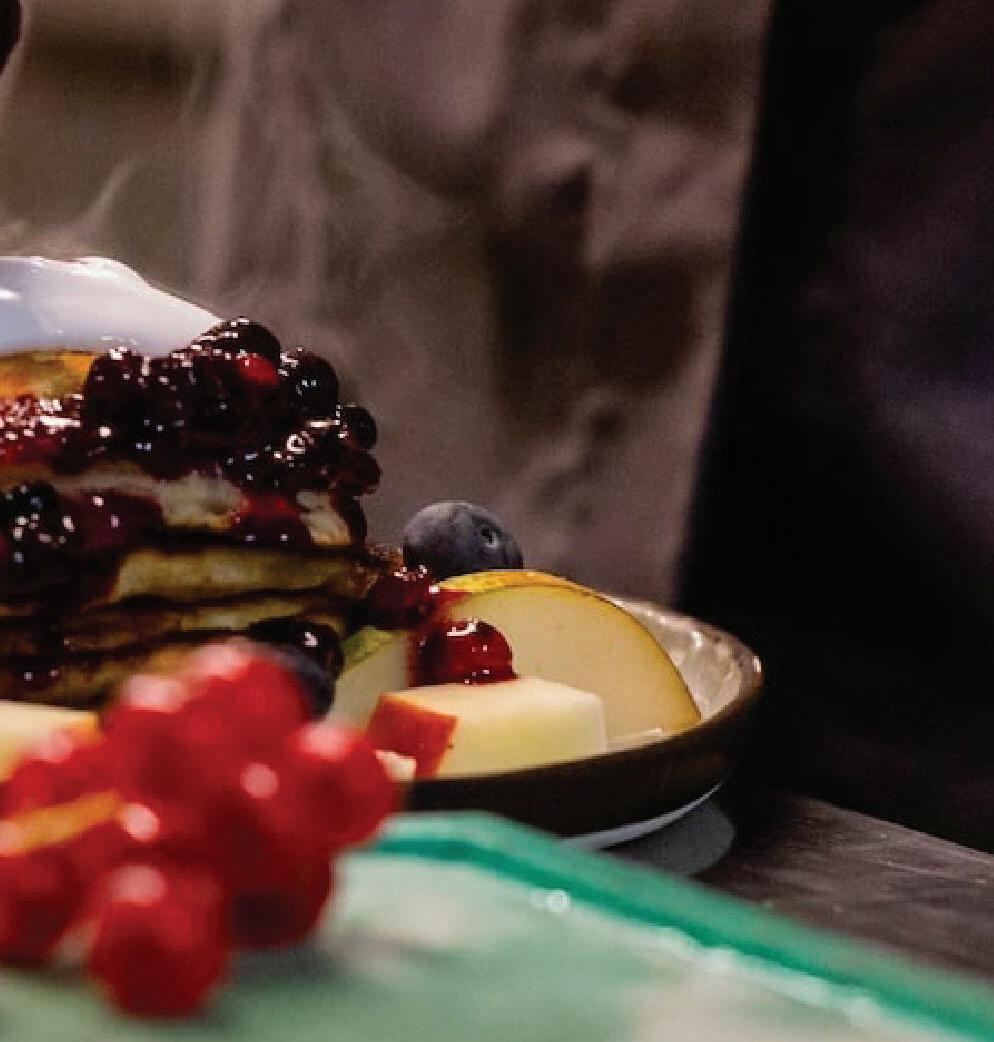

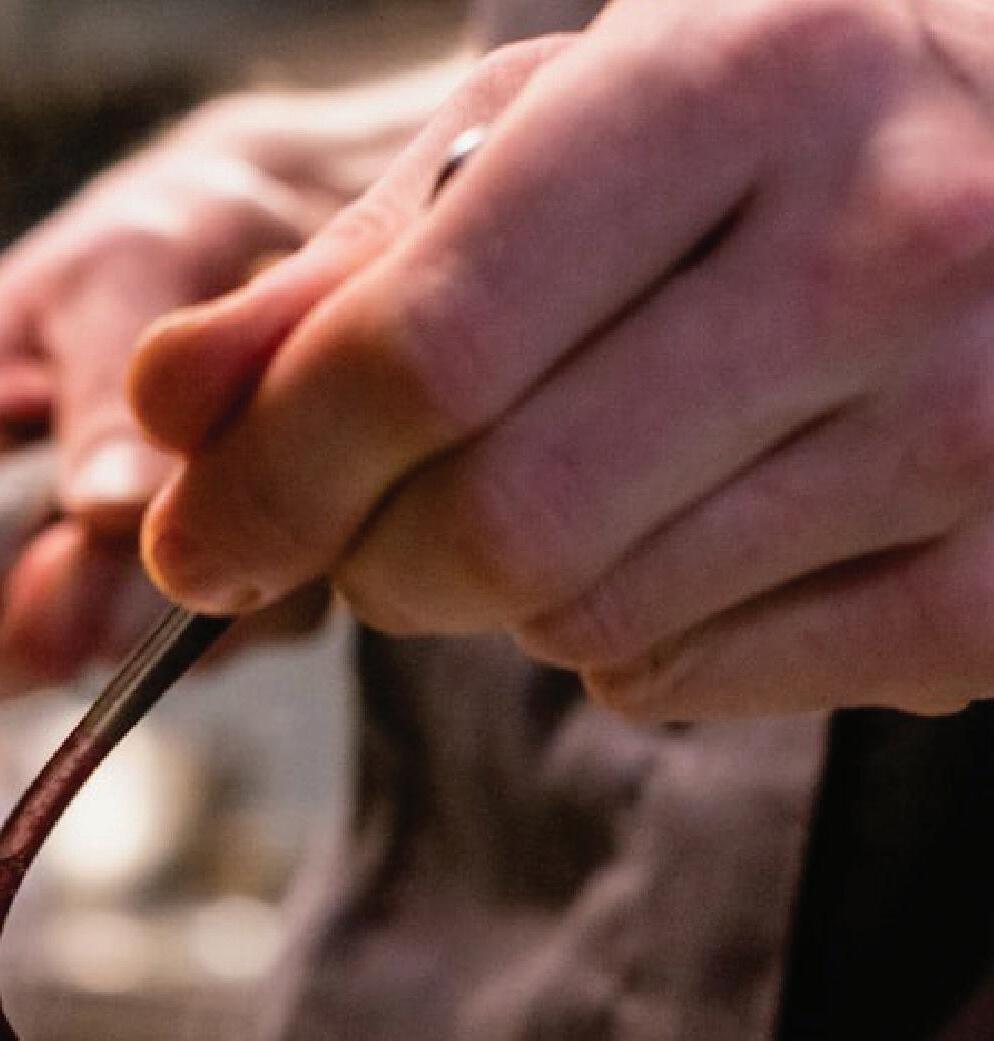
Information Services:
> On-the-go news briefs
> Data-driven trends and analysis

> Restaurant learning center


Business Solutions:
> Menu engineering
> Digital marketing
> Profit optimization
Stay in touch with all our news on the local and national scene. Now more than ever, restaurant operators need access to the latest news and best practices to run their businesses. Eatery Pulse Media is a primary source of news within the restaurant industry, a consultancy and creative content studio for business.
Restaurant C-Suite Magazine is distributed by Eatery Pulse Media. Eatery Pulse is a primary source of national restaurant industry news and content, providing information services, consulting and a creative, customcontent studio for business. This digital magazine was specifically created for multi-unit restaurant executives. It delivers the most highly-impactful news for the restaurant industry’s top leaders and visionaries. Today’s C-suite executives and their managers need information that is carefully selected, meaningful and delivered in a seamless, cohesive fashion.
Stay updated with all our content at subscribe.restaurantcsuite.net.
Copyright 2023 - 2024 Eatery Pulse Media.
SPRING 2023
04 Editor’s note
05 Trend pages, part I
09 2023 State of the Restaurant Industry
13 Qu State of Digital Report
15 Trend pages, part II
17 Eatery Pulse launch of Learning Center
18 Chipotle launches new Farmesa fast casual
22 Shaking up drink flavors

Executive Editor
Rick Zambrano
Eatery Pulse Director of Photography
Aaron Hernandez
Assistant Editor
Margaret McConnell
Editorial Designer
Ashley McCarty
Contributor
Eric Nomis
To place an ad in any of our publications, contact sales@eaterypulse.net
Powered by
On the cover: Photo by Chipotle Mexican Grill. Photo by Louis Hansel.
As restaurant operators look toward spring and summer, there is reason for optimism. The National Restaurant Association recently published its 2023 “State of the Restaurant Industry” report, projecting sales for eating and drinking places will reach $997B this year. More good news: Economists at the Association don’t expect economic conditions to interfere with restaurants’ recovery. As always, there will be challenges ahead and expense management should be a top concern.

The majority of restaurant operators expect business conditions to improve seven to 12 months from now. The second biggest group of operators think this improvement will come to fruition in the next six months. That’s a significantly positive outlook amid nagging, persistent inflation, as well as rising costs to acquire and keep restaurant staff.
Fast-casual, casual and fine-dining operators are certainly looking for good things to happen, with 40%, 39% and 39%, of them, respectively, saying conditions will improve in 7 to 12 months. Operators with the rosier outlook of a 6 month upturn in those same segments are clocking in at 28%, 27%, and 27%.
Consumers want the restaurant experience, but at the same time they like the convenience of carryout and delivery. Most consumers say they order carryout and delivery now more than in pre-pandemic times. As for the in-restaurant experience, 84% of consumers think going to a restaurant with family and friends is a better use of their leisure time than cooking and the related cleanup, according to the report.
Given these consumer numbers, savvy operators will seek a balance between takeout and on-premises
dining. But success does not lie only in a fixed formula or mix of percentages: flexibility and experimentation also play key roles. They will need to learn to read the room again—the new dining room, that is—with today’s ebb and flow of traffic and the characteristics of each. Loyalty programs, special events, fine-tuning digital ordering, and communicating with customers will build a solid foundation for growth.
On the cost side, restaurant operators are learning to be more receptive to technology and double-down on disciplines such as periodic inventory counts, reducing menus and verifying recipe costs. Now more than ever, it’s important to leave no cost control stone unturned. Having worked with operators one-on-one, I know challenges abound, but certain disciplines can take restaurant owners and
operators far.
In this issue, we look at the recent launch of Chipotle’s new concept, as well as some takeaways from the “State of the Restaurant Industry” forecast. What is the nugget of learning we can extract from it? My biggest takeaway is that restaurants should be hyper-focused on young consumers. Not only do they expect their financial situation to improve this year, but they are the biggest foodie generation in a long time. If you’re looking for an opportunity, you might want to read on.
Sincerely,
Rick Zambrano Executive Editor, Eatery Pulse MediaA report from TouchBistro suggests that restaurant owners are making progress in recovering their sales compared to prepandemic levels. At the same time, they face hefty obstacles in the way of increased expenses, particularly food costs.
Financial Health: Restaurant owners have regained sales to 75% of pre-pandemic levels However, profit margins have stayed steady at 10.6% of sales due to the cost of food and other expenses.
Staffing & Labor: Despite relatively low unemployment rates nationwide, TouchBistro reports that 97% of restaurateurs indicate they are short at least one position. On average, they are down five positions.

Inventory & Menu Management: Restaurant owners have struggled with food cost increases and cite this as their biggest financial strain. It is easy to see why 53% of restaurateurs reported raising menu prices in the past six months.
% of sales recovery to pre-pandemic levels
75%
% restaurant owners indicating they are short one or more positions
97%
% of restaurateurs increasing menu prices in past six months
53%
Higher costs have impacted restaurant operations: both near-future plans and the present-day operating environment have come under pressure. In response, restaurant operators say they have reduced hours of operation on days their restaurants are open.
Operators have needed to reduce the number of employees (32%). In addition, some indicate they postponed new hiring (19%). Operators have relied more on technology (21%). Meanwhile, some have eliminated third-party delivery in response to higher costs (13%).
Actions taken by restaurants in recent months as a result of higher cost
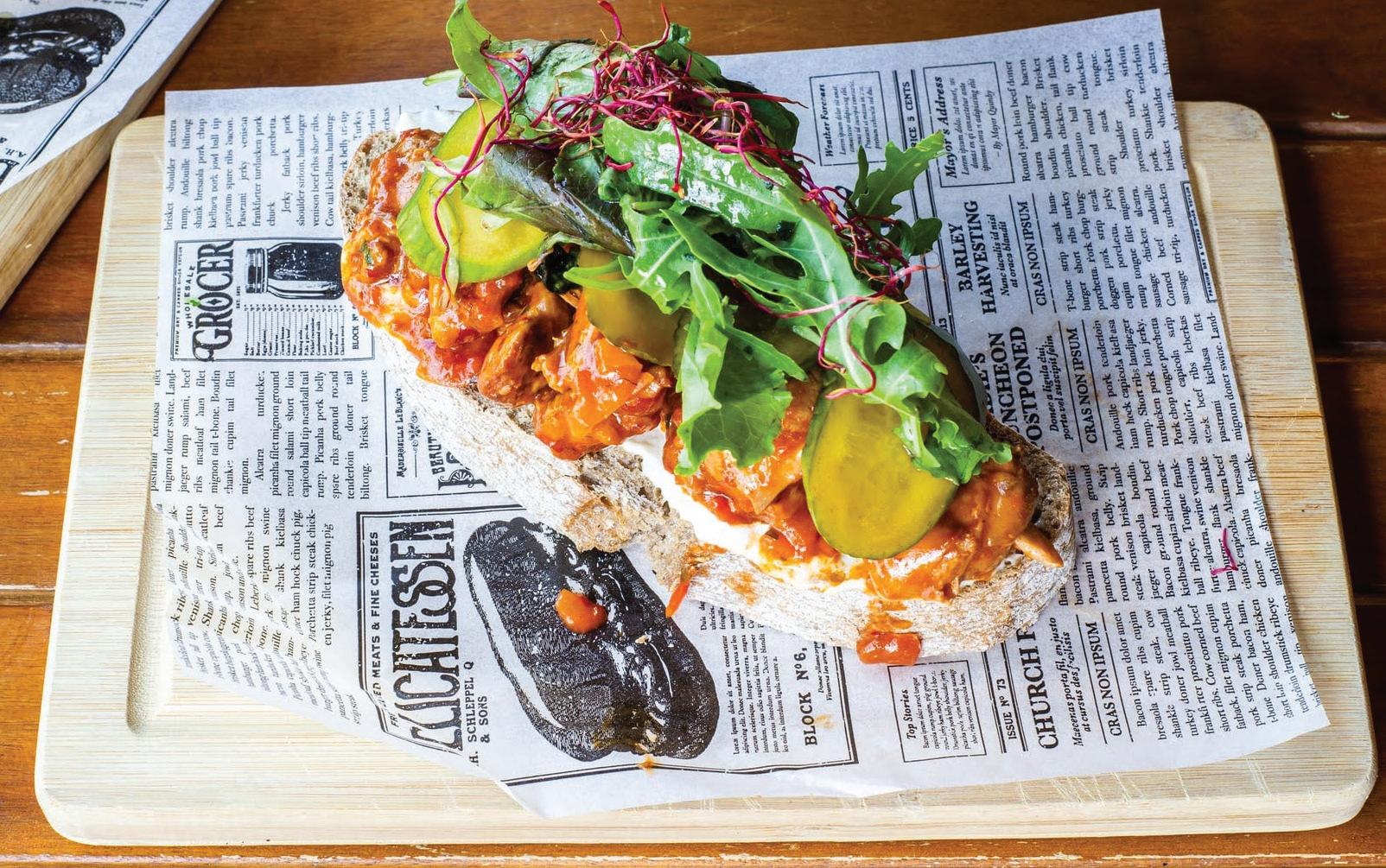
Notes: Limited-service includes quickservice, fast casual and coffee/snack concepts. Multiple responses were allowed.
Source: National Restaurant Association “Restaurant Business Conditions Survey”. Photo by Louis Hansel.
A recent report from Overproof, analyzing data on the ever popular and lucrative margarita, provides new insights. The findings from the data provider to toptier alcohol brands reveal that the margarita is the top cocktail in the US market, garnering a 12.4% market share. By comparison, the martini is the second-top cocktail with a 10.2% market share. Meanwhile, the next top cocktail—Old Fashioned—recorded a distant third position with a 5% market share

Margaritas come in all varieties, shapes and sizes. The leading suppliers of these various recipes in the classic category include Remy Cointreau (24.8%), Sazerac Company (17.5%) and Diageo USA (12.8%). Cuervo Tradicional (17.8%), Grand Marnier (14.4%), Patron (11.2%), and Cointreau (11.0%) make up the top brands in the classic margarita category.
Overall, the top margarita brands hold more than a 35% market share: Cointreau (11.5%), Grand Marnier (11.0%), Cuervo Tradicional (7.4%), and Patron (6.5%) combine to represent a 36.4% share. In Texas, the leading tequila is Casa Noble. Further North, Don Julio reigns supreme in Illinois and Pennsylvania. In Louisiana and Mississippi, Cuervo 1800 is the top brand, according to the data.
Source: Overproof 2023 Margarita report.
Although consumers are seeking the experience of on-premises dining, takeout is here to stay, according to the National Restaurant Association. Among many benefits, dedicated takeout counters and windows provide a quick and easy way for consumers to grab hot, restaurant quality meals.
A total of 38% of casual-dining restaurant operators expect dedicated takeout counters and windows to be even more prevalent in 2023. Eighteen percent of these operators say they will be less common, while 44% of casual-dining operators expect them to stay at the same level.

On the other hand, quick-service, fast-casual and coffee & snack operators are bullish on the idea of
Source: National Restaurant Association “State of the Restaurant Industry” report.
top by: Rick Barrett, Ambitious Creative Co.
dedicated counters and windows. Respectively, 47%, 49% and 50% of these operators expect them to be more common. Meanwhile, 43%, 39% and 38%, respectively, say they will remain at the same level.
Curbside service, on the other hand, has not taken hold as firmly as other modern, pandemicera options. Operators express a mix of feelings: By and large, they expect curbside takeout to remain the same versus grow. A total of 49% of casual-dining operators and 40% of quick-service operators expect it to remain the same. Only 29% of casual-dining operators expect it to be more common, while 39% of quick-service operators feel the same way.
54% of Gen Z see their finances improving in 2023; 44% of all consumers not eating at restaurants as often as they would like
The restaurant industry, facing ongoing challenges due to global inflation and labor shortages, will grow its sales to $997B at eating and drinking places in 2023. The increase, which is partially due to higher menu prices, is long overdue and will help offset cost increases on various fronts. This data, generated by the National Restaurant Association in its 2023 “State of the Restaurant Industry” report, affirms the challenges and several opportunities that restaurants have.
For one, 70% of operators say that business conditions have settled into a new reality postpandemic and a “new vision of normal.” The foodservice workforce in 2023 will grow by 500,000 jobs, for a total employment of 15.5M by the end of the year.
Consumers are looking for dining experiences. In fact, 84% of consumers say going out to a restaurant with family and friends is a better use of their spare time than cooking and cleaning up afterward.
Moreover, consumers are optimistic about the future, while being excited about potential experiences in the restaurant scene. A total of 54% of Gen Z and 51% of Millennials believe their finances will get better in 2023. Overall, more than 42% of all consumers feel their finances will get better. Only 32% of Baby Boomers feel the same way. In summary, younger consumers are more optimistic about their personal finances in 2023.

Restaurants represent an opportunity to try flavors cultivated and offered primarily
within the four walls of a dining room. Not surprisingly, 78% of consumers say restaurants offer flavors and taste sensations not easily replicated in the home kitchen. The experience is key: 78% of respondents indicated they would rather spend money on an experience such as a restaurant, than purchase a store item.
On a par with the 2022 results, this year, 44% of consumers indicate they are not eating at restaurants as often as they would like. By the same token, 36% of respondents indicated they are not ordering carryout or delivery as often as desired.
Restaurants that offer takeout, whether through carryout or delivery, are addressing pent-up consumer demand for restaurant food. Since December of 2021, according to “State of the Restaurant Industry,” the number of consumers who say they have not ordered takeout as often as they would like has hovered in the mid-30% range. However, from December 2021 to January 2023, the portion of consumers who have not been able to eat
on-premises at a restaurant as often as they would like has declined from 51% to 44%, indicating preferences for off-premises dining are stabilizing, while on-premises occasions are still on the move.
Michelle Korsmo, president and chief executive of the National Restaurant Association, said, “The restaurant and foodservice industry is fueling the American economy. Our hiring rate and wage increases are outpacing the overall private sector, and this year our industry will contribute nearly $1 trillion to the economy. The 2023 State of the Restaurant Industry report offers an in-depth analysis of what’s driving this growth and the tremendous opportunities for restaurant owners, operators, and team members who want to grow their businesses and expand their careers.”
Four in ten foodservice operators in the limited-service segments believe that drivethru lanes will become more common in 2023. On the other side of the spectrum, outdoor dining and alcohol-to-go are becoming must-haves for operators. The report finds that across all six major segments, more than 90% of operators plan to continue offering outdoor seating. And that same number will likely continue to offer alcohol-to-go options, provided their jurisdictions allow it.

Technology is an opportunity, but also a weak spot. According to the Association, “Despite widespread investment in technology in the last few years, the restaurant industry is still far from becoming a tech-centric sector.” As an example, most operators continue to see their use of technology as mainstream rather than leading edge.
To view the report, navigate to the Association’s download page
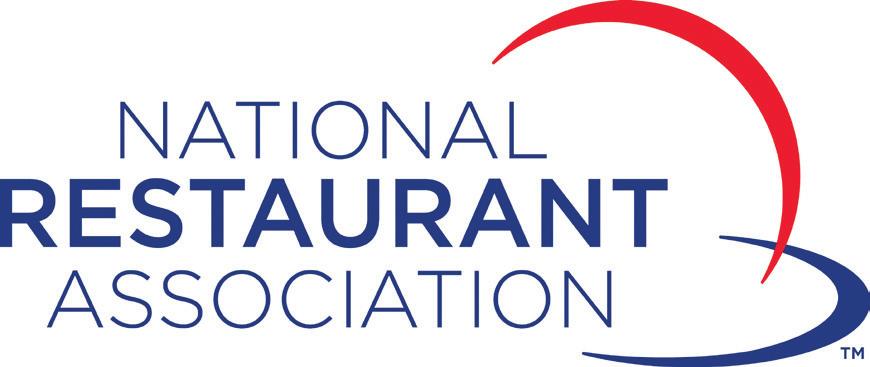
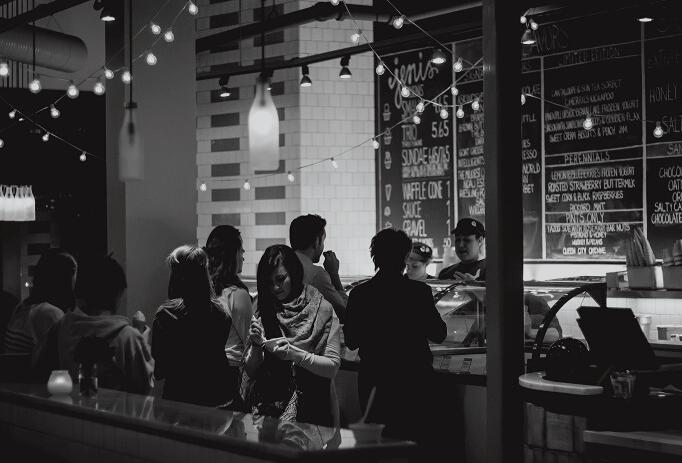
Digital sales continue to grow, but at slower pace; tech solutions address inaccuracy in order fulfillment
Limited-service restaurant brands are increasingly relying on technology to grow their business. Digital sales will continue to grow, but at a more modest pace, according to restaurant POS platform Qu’s “State of Digital Report.” In its fourth annual version, the report includes findings that digital sales reached 25% of sales on average for the largest share of brands. Some attained 50% or more of their business from digital sales.
The report, which tapped into a survey of chief experience officers at more than 85 brands and 35,000 locations, collected information on key priorities and initiatives for the next two years. The data captures the essence of these executives’ investment priorities, top innovations, and critical business challenges that these executives seek to solve.
A total of 78% of limited-service respondents expect digital sales to increase this year. That represents a drop from the 85% of brands expecting an increase at the same time last year.
Additionally, 3% of limited-service brands expect a decrease, while 19% expect their digital sales to remain the same. Last year, the results were 0% and 14%, respectively.
As anticipated, quick service restaurants, or QSRs, commonly known as coffee shop & fast-food restaurants, project stronger digital growth in 2023 than their fast-casual counterparts. Among QSRs, 84% project digital sales will increase this year, versus 75% of fast casuals. Within the fast-casual group, 5% predict that digital sales will actually decrease.
Looking ahead, as part of a shift toward platforming, half of limited-service operators say they will make a move to a unified ordering system in the next two years. The benefits, these operators indicated, will be improved data capture, integrations/APIs (Application Programming Interfaces), and internal efficiencies, according to Qu.
Artificial intelligence and updates to unified ordering system solutions will help drive labor efficiencies and improve accuracy. These advances will help correct problems with ordering inaccuracies, according to 65% of limited-service brand respondents. Ordering inaccuracies, especially from the kitchen, plague restaurants. As a result, guests report 15% to 20% lower satisfaction rates with the off-premises dining experience.
Aside from order inaccuracy-kitchen fulfillment (64%), consistent guest experience (66%), accuracy of orders-driver/order pickup (52%), and accuracy of delivery items (46%) are other top factors impacting the offpremises guest experience.
“This does not mean one size fits all, or a shift to one system for front and back of house,” said Amir Hudda, chief executive of Qu. “We want to give operators a choice and
provide a platform that helps them reduce the complexities and inefficiencies associated with multiple ordering systems.”
Online ordering has been all the rage for the past three years, and ranked as the first priority up until 2022. Now, Cloud POS, Platforms, and Mobile/Loyalty solutions are top priorities, with Online Ordering ranked fourth.

“This signals healthy evolution and maturation for brands who’ve already solved for online ordering and again points to the new focus on more unified systems and data collection,” notes Qu. To that point, only 7% of brands said they can easily extract and use data to drive decisions.
AI and machine learning (AI/ML) ranked at the top of the innovations priority list. A total of 70% of operators cite they will use AI/ML this year to increase efficiency, automated processes, profitability, and data collection/ intelligence. As such, it’s surprising that just 13% of operators selected AI/ML as a priority in 2022. Respondents note robotics as another top innovation they’ll pursue.
A full copy of the 2023 Qu “State of Digital Report” can be found here.
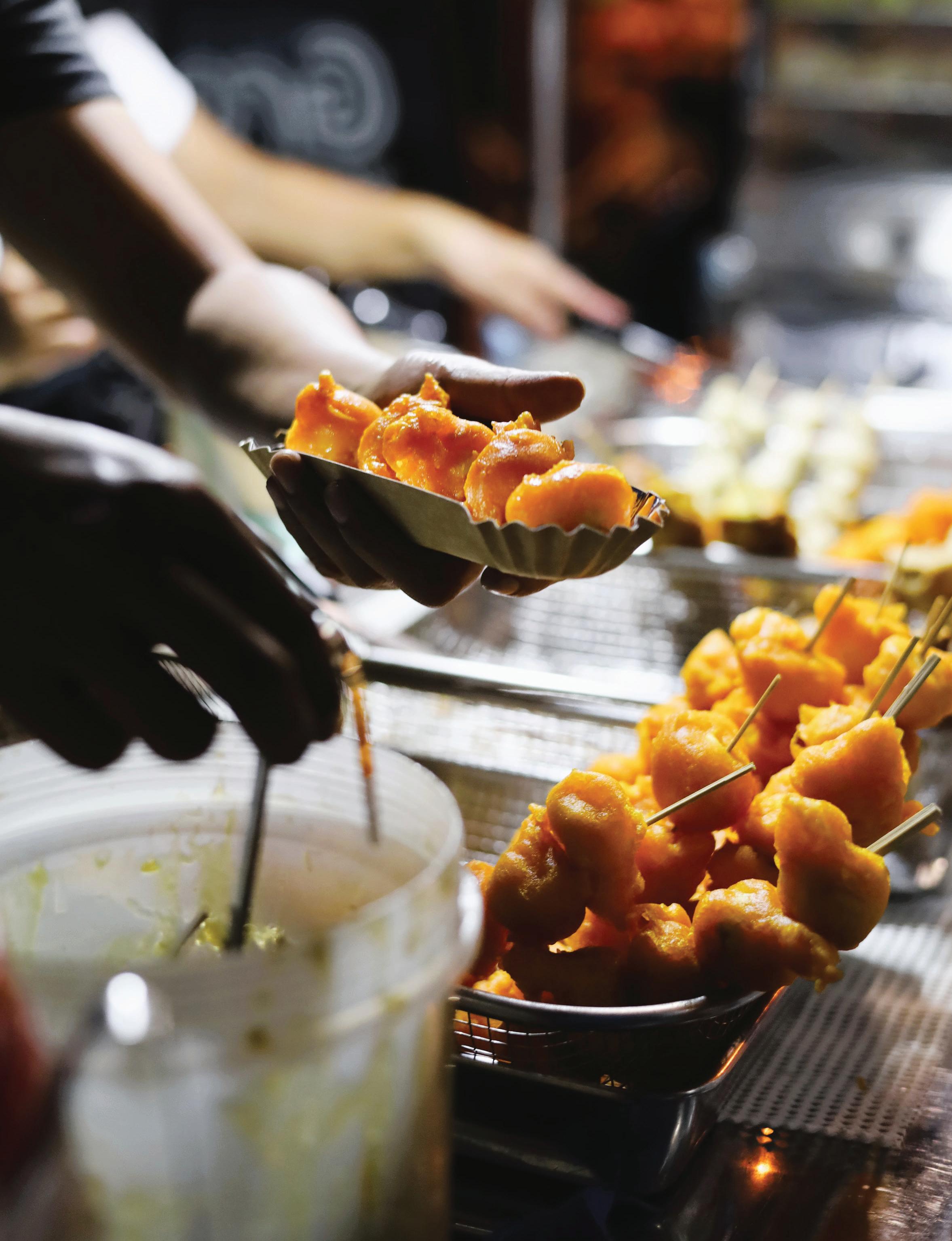
A total of 78% of the CXOs of limited-service restaurant companies expect digital sales to increase this year. That represents a drop from the 85% of brands expecting an increase at the same time last year, according to the “State of Digital Report” from Qu. (See page 13.)

Additionally, 3% of limited-service brands expect a decrease, while 19% expect their digital sales to remain the same. Last year, the results were 0% and 14%, respectively.
As expected, quick service restaurants, or QSRs, commonly known as coffee shop & fast-food restaurants, project stronger digital growth in 2023 than their fast-casual counterparts. Among QSRs, 84% project digital sales will increase this year, versus 75% of fast casuals. Within the fast-casual group, 5% predicted that digital sales will actually decrease.
Source: 2023 “State of Digital Report” by Qu.
Photo top: by Dan Burton.
Off-prem sales will continue to grow, but at a slower rate in 2023 - 2024
New venture will offer online access, to inform and inspire management, staff nationwide
Washington, DC (March 6, 2023) The combination of ongoing cost increases and a subdued recovery has hit restaurants hard. Eatery Pulse Media is readying its online learning center to provide strategies and tools based on financial principles to thousands of restaurant owners, managers and staff.
Through the Restaurant Learning Center, Eatery Pulse Media’s editor, Rick Zambrano, continues to feed his expertise back into the industry that launched him 22 years ago. With a background in finance and experience in fast casual, operations services, consulting, writing, and work for a boutique research firm, his knowledge of the industry is second to none.
Says Zambrano, “Initially, we were disappointed that we weren’t able to launch a local school due to the onset of COVID. But this is an effective way to disseminate a knowledge base to industry stakeholders and fortify their ability to succeed in a very challenging restaurant environment. The silver lining is that this instruction can now reach restaurants across the country.”
Sales, food cost, inventory and other foundational topics will appear in the Restaurant Learning Center.
A new link will be forthcoming in March, and the launch will take place in April.
Rick Zambrano serves as editor for Eatery Pulse Media and managing principal of eatery pulse consulting. Through his work in finance, consulting, publishing and research, he developed a unique blend of skills to serve the restaurant industry. Zambrano shares his expertise through information services and consulting.
In the recent past, Zambrano has consulted for the entrepreneurs behind some of the fastestgrowing restaurant brands in the Mid-Atlantic Region. His work began in the fast casual industry, working for Au Bon Pain, now owned by Ampex. Advising senior management and working with restaurant managers and the technology group, Zambrano made a significant impact to the cafe-bakery chain.
Eatery Pulse Media is a primary source of national restaurant industry news and content that provides information services, consulting and a creative custom-content studio for business. As a multi-brand, multimedia trade publisher, it empowers foodservice professionals, business owners, and foodies to further engage and celebrate food and drink topics.
Eatery Pulse generates visually-compelling published formats and ultra high-definition video broadcasts to report industry news, and to tell the unique and impactful stories of foodservice organizations, businesses and restaurants. Based in the Washington, DC area, the publisher operates Eatery Pulse Network, eatery pulse now, Studio Team, and eatery pulse consulting.

For Chipotle, is the recent launch of Farmesa in Santa Monica a good move? It had been rumored for several weeks that Chipotle Mexican Grill would debut a new restaurant concept. What surprised some was that the prototype was somewhat similar to what was already out there.
Another sustainable, feel-good bowl concept? Dig, Sweetgreen and Panera Bread all menu warm bowls and follow sustainable animal welfare guidelines, with similar messaging around “food with integrity.” Sure, Chipotle executives have shown that they can manage a restaurant brand based on this premise and do it well, but how will they grow and nurture a brand so similar to other companies’ existing concepts?
The Third Street Promenade restaurant will offer bowls featuring a protein, accompanying greens or grain, two sides, a choice of five sauces, and a topping. As director of culinary innovation for Farmesa, James Beard Awardwinning chef Nate Appleman curated a menu that puts the spotlight on fresh fare with real, healthy ingredients, Chipotle announced. Bowl pricing runs from $11.95 to $16.95.
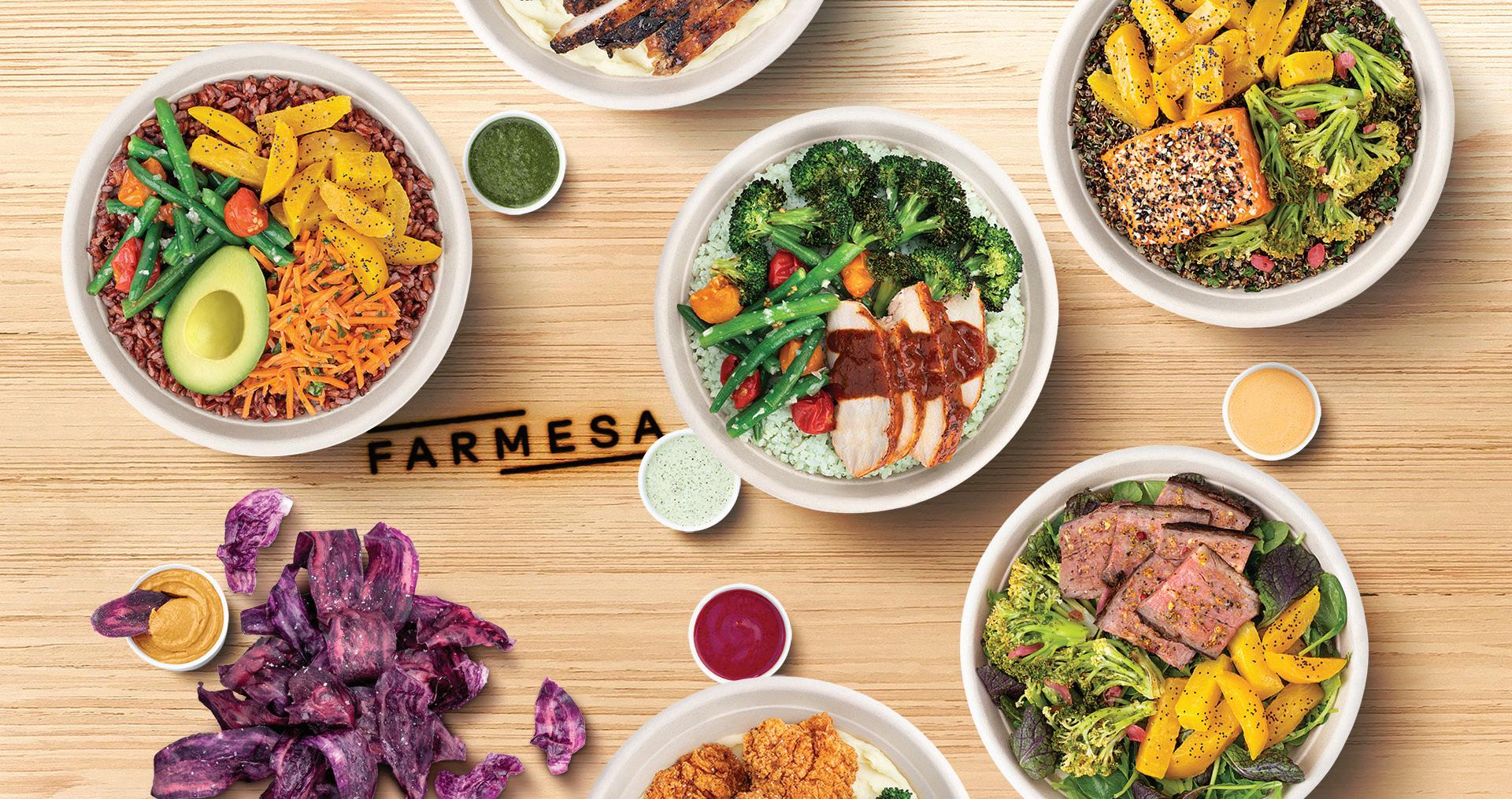
The good news is that if a similar concept is doing well, then there most likely is a market. “If you are a large successful brand with plenty of financial resources, and adequate R&D staff, there is nothing wrong with small and measured single new brand tests if there is nothing pressing in the home brand,”
said John Gordon, a restaurant analyst and principal at Pacific Management Consulting Group. “It’s really about where the home brand is in terms of its lifecycle. It takes years to develop new brands.”
From an operational perspective, Chipotle is in a good position to grow this concept, and do it well, as it has a seasoned team of executives. In terms of the basics, the development team has picked a market that is close to Newport Beach HQ, and the food will most likely be sourced from the same farmers and vendors, giving Farmesa a leg up on the competition in food pricing and product availability. It will be easier to create a framework in which the food provenance can follow Chipotle’s philosophy.
One store does not make a restaurant chain, but there is plenty of time to develop this concept before considering an expansion plan. Brian Niccol, chairman and CEO of Chipotle, noted, “Our New Ventures team, which was created in 2022, developed a unique restaurant concept that uses classic culinary techniques with flavorful ingredients in a fast casual setting that we’re excited to test and learn on before we determine a broader rollout strategy.”
Unlike concepts that don’t fit together, Chipotle’s Farmesa appears to align well with its current clean-food philosophy, although the typical customer may not appreciate the connection. To many consumers, Chipotle represents tasty food prepared quickly and conveniently. On the convenience side, in particular, the Newport Beach, Californiabased restaurant chain has done well to build a digital business that represents 37.4% of its food business revenue, as it did in its fourth quarter of 2022.
Industry observers will recall the Qdoba split from Jack in the Box, and how several other chains have not necessarily complemented one another. Wendy’s and Arby’s eventually split and have done better on their own.
Darden Restaurants, parent of Olive Garden, Seasons 52, and several other full-service restaurant chains, on the other hand, has shown it can nurture multiple brands on a grand scale. When it sold Red Lobster, the company indicated that the move was mainly to retire debt and improve shareholder equity through dividends. What’s more, Chipotle used to be owned by McDonald’s before it was divested in 2006, along with Donatos Pizza and Boston Market.
Given Chipotle’s size, the company will do well with resourcing the new Farmesa concept, as well as staffing it, observed Gordon. Here are some crucial steps that also offer up lessons for other restaurant companies taking the same trajectory:
1) Do the market research to see if conceptually there is a market
2) Build the product so that it is profitable
3) Field test the concept
4) Market test it
Chipotle will open a new venture, known as Farmesa, in Santa Monica. The upcoming concept restaurant offers a variety of proteins, green grains and vegetables. Chipotle said that initially, the Third Street Promenade store will soft open, presenting a limited menu and hours.
Farmesa will have its grand opening in March. James Beard Award-winning Chef Nate Appleman has curated a menu that puts the spotlight on fresh fare with real, fresh ingredients. A few decades ago, he led menu innovation for Chipotle. Now, Appleman also serves as director of culinary innovation for the new Farmesa concept.
Bowl pricing runs from $11.95 to $16.95. According to Chipotle’s announcement, each bowl will feature a protein, accompanying greens or grain, two sides, a choice of five sauces, and a topping.
“One of our strategic objectives is to create or invest in emerging culinary spaces and restaurant concepts that fit within Chipotle’s food with integrity mission and make fresh food daily,” said Brian Niccol, chairman and chief executive. “Our New Ventures team, which was created in 2022, developed a unique restaurant concept that uses classic culinary techniques with flavorful ingredients in a fast casual setting that we’re excited to test and learn on before we determine a broader rollout strategy.”
Prior to the grand opening, the Farmesa restaurant team will cement their learning of various cooking techniques. In addition they will learn to maximize throughput, said a statement.
The Kitchen United Mix food hall at 1315 3rd Street in Santa Monica will host the new concept. Customers can order on kiosks there or at kitchenunited.com/santamonica, Chipotle said. Third-party delivery providers will also fulfill orders.
Dishes on the menu will include Classic Santa MariaStyle Grilled Tri-Tip Steak, Everything Spice-Crusted Ora King Salmon, Whipped Potatoes, Golden Beets, Sprouted Cauliflower, and Sweet Potato Chips.
On the beverage menu, Farmesa will offer 100% Certified Organic, Non-GMO and All-Natural drinks from Tractor Beverage Co. The restaurant will also serve still and sparkling water.
With regard to the last point, “If there is not enough or no market demand, give it up,” says Gordon. “There is no shame in testing and moving on. Right at this point, we have no clue if there is market potential for Farmesa. It has to be proven.”
“Launching Farmesa in the Kitchen United Mix food hall in Santa Monica and partnering with third-party partners for pickup or delivery will allow us to reach a large number of consumers, learn quickly, and evolve our concept and menu so that we can deliver on our goals before expanding,” said Nate Lawton, VP of New Ventures at Chipotle. “We believe there’s an opportunity to serve premium, craveable food every day and we’re eager to bring this new concept to life.”





With cold weather lingering in the Northeast, it’s good to be reminded that spring is just around the corner. Restaurant operators are envisioning outside patios and open-air bars full of patrons, indulging in both seasonal and tried-and-true cocktails. And the curb appeal of streeteries in the cities that allow them is about to take a climb. Not to mention that many to-go cocktails will continue to be enjoyed post-pandemic on home patios and decks.
According to data from Technomic, global fruits on adult drink menus are trending. For example, mentions of yuzu and guava are up 63.2% and 31% respectively. Technomic Ignite menu data (Q4 2021-Q4 2022) also shows global flavors, like green tea and ancho, up 31.2% and 17.9%, respectively, notes Katie Belflower, editor at Technomic.
Boozy drink choices promise a delicious spring + summer
The Japanese Yuzu served at STK in Las Vegas combines this citrus fruit highlycultivated in Japan and South Korea with Suntori Toki Whisky. For the Cherry Blossom Festival in Washington, Embassy Suites Hotel by Hilton Washington DC Convention Center launched weekly whisky sampling nights. One of the drinks being spotlighted is the Tokyo Night cocktail, prepared with Shinju Whisky, Grand Marnier and yuzu juice.
Moreover, Belflower said, “Herbal flavors are also showing growth within adult beverages, with flavors such as rosemary (+54.5%) and basil (+16.4%) increasing on menus.” This additional trend is likely to pay dividends for restaurant and bar operators and should factor into ongoing drink menu innovation.
In DC’s Foggy Bottom district, where George Washington University resides, Circa aptly menus the Foggy Bottom cocktail, made with Absolut Citron vodka, lemon, rosemary, and cucumber. In the city’s Union Market food hall, Buffalo & Bergen pays homage to the character of Bodhi from the movie “Point Break”: the Adios Amigo mixes El Silencio, Jameson Orange, grapefruit, rosemary, and lime juice.

Espresso cocktails, trending for a couple of years now, still appear to have momentum. Espresso is one of the fastest-growing flavors paired with adult drinks, according to Belflower. She posits that it makes a lot of sense given that espresso martini mentions on menus, in general, are up over 161% the past year.
At Olive & Ivy, part of FRC Concepts, The Infamous Espressotini cocktail combines espresso infused vodka, cold brew, madagascar vanilla, and giddy-up dust. “Given this, it’s likely we will continue to see espresso martinis trending on menus in 2023. Another trend that could be carried over into this year is peanut butter flavors in adult beverages. Adult beverages with peanut butter grew 27.8% in the last year, most often in the form of peanut butter whiskey.
It’s interesting to note that while Latin-inspired flavors like Horchata and Dulce de Leche are
not growing on adult beverage menus, mezcal and tequila as flavors are. Tequila straight is up 69.6% in the past year, and mezcal straight is up 19.6%, demonstrating their potential. The Southside Mule at dLeña, part of the Richard Sandoval empire of eateries, is a potpourri of smoky, herbal and tropical flavors: espadin mezcal, blanco tequila, pineapple-rosemary shrub, ginger beer, and lime.
IT’S HERE NOW.
) NEWS AND INSIGHTS
)) LEARNING CENTER